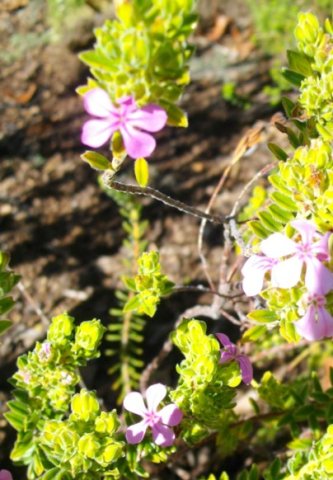Acmadenia

Author: Ivan Lätti
Photographer: Ivan Lätti
Acmadenia is a genus of shrubs and shrublets in the Rutaceae or citrus family, many of them commonly known as buchu, a name shared with a few other related genera, including Agathosma. The plants are ericoid, usually single-stemmed.
Some acmadenias have opposite leaves, some have petioles, the leaf-shape linear to orbicular or variably pointed. The leaves and fruit of these plants bear tiny oil glands that imbue each species with its own characteristic scent. (Think of the Citrus genus.) The aromas are strongest when the leaves are crushed.
The flowers grow solitary or in clusters of variable size with leaf-like or reduced bracts and two smaller bracteoles. The calyx is deeply divided into five persistent lobes, the five petals usually clawed and often bearded, bent inwards in the throat. Petal colour is pink or white.
There are five stamens on short, mostly hairless filaments. The anthers are not exserted. The ovary consists of up to five round-tipped carpels. The five-lobed or carpelled fruit may be concealed by the calyx lobes.
There are about 33 species of Acmadenia. The family includes rue and an Australian genus called Boronia that bears fragrant flowers and is used commercially for producing oils. Buchu is a common name for a great variety of traditional medicine plants.
Most of the acmadenias are endemic to fynbos in the south-western Cape, while some grow as far east as the old Ciskei of the Eastern Cape. The Acmadenia genus is commonly known as duineboegoe in Afrikaans (dune buchu).
The plant in picture, Acmadenia mundiana, has become a rewarding gardening subject, an ornamental shrub for rockeries and pruned borders. In spite of its natural limestone habitat the plant performs well in average garden soil and circumstances, even as a container plant (Leistner, (Ed.), 2000; Manning, 2007; (Wikipedia); www.plantzafrica.com).

